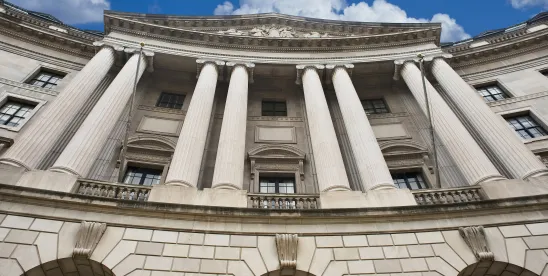The U.S. Environmental Protection Agency (EPA) issued on April 26, 2024, the final National Primary Drinking Water Regulation (NPDWR) for six per- and polyfluoroalkyl substances (PFAS). 89 Fed. Reg. 32532. The NPDWR establishes Maximum Contaminant Levels (MCL) for six PFAS in drinking water: perfluorooctanoic acid (PFOA), perfluorooctane sulfonic acid (PFOS), perfluorohexane sulfonic acid (PFHxS), perfluorononanoic acid (PFNA), and hexafluoropropylene oxide dimer acid (HFPO-DA) as contaminants with individual MCLs, and PFAS mixtures containing at least two or more of PFHxS, PFNA, HFPO-DA, and perfluorobutane sulfonic acid (PFBS) using a Hazard Index MCL to account for the combined and co-occurring levels of these PFAS in drinking water. EPA also issued final health-based, non-enforceable Maximum Contaminant Level Goals (MCLG) for these PFAS. The final rule will take effect June 25, 2024.
Regulatory Levels
EPA’s general fact sheet states that the final rule sets the following levels:
| Chemical | MCLG | MCL |
| PFOA | 0 | 4.0 parts per trillion (ppt) |
| PFOS | 0 | 4.0 ppt |
| PFNA | 10 ppt | 10 ppt |
| PFHxS | 10 ppt | 10 ppt |
| HFPO-DA (GenX chemicals) | 10 ppt | 10 ppt |
| Mixture of two or more: PFNA, PFHxS, HFPO-DA, and PFBS | Hazard Index (HI) of 1 | HI of 1 |
HI: The HI is made up of a sum of fractions. Each fraction compares the level of each PFAS measured in the water to the health-based water concentration.
MCL: The highest level of a contaminant that is allowed in drinking water. MCLs are set as close to MCLGs as feasible using the best available treatment technology and taking cost into consideration. MCLs are enforceable standards.
MCLG: The level of a contaminant in drinking water below which there is no known or expected risk to health. MCLGs allow for a margin of safety and are non-enforceable public health goals.
Implementation
EPA’s presentation on the final NPDWR states that under the final rule, public water systems must:
- Conduct initial and ongoing compliance monitoring for the regulated PFAS;
- Implement solutions to reduce regulated PFAS in their drinking water if levels exceed the MCLs; and
- Inform the public of the levels of regulated PFAS measured in their drinking water and if an MCL is exceeded.
The timeframes for water systems to implement the requirements are:
- Within three years of rule promulgation (2024-2027):
- Initial monitoring must be complete;
- Starting three years following rule promulgation (2027-2029):
- Results of initial monitoring must be included in Consumer Confidence Reports (i.e., Annual Water Quality Report);
- Regular monitoring for compliance must begin, and results of compliance monitoring must be included in Consumer Confidence Reports; and
- Public notification for monitoring and testing violations;
- Results of initial monitoring must be included in Consumer Confidence Reports (i.e., Annual Water Quality Report);
- Starting five years following rule promulgation (starting 2029):
- Comply with all MCLs; and
- Public notification for MCL violations.
- Comply with all MCLs; and
According to EPA, flexibilities in the final rule include:
- Reductions in required initial monitoring for most small water systems;
- Using previously collected drinking water data to satisfy the rule’s initial monitoring requirements (e.g., Unregulated Contaminant Monitoring Rule (UCMR));
- Reduced compliance monitoring based on sampling results;
- Additional time to comply with the PFAS MCLs, allowing systems time to plan, design, and find the best solutions for their communities;
- EPA’s final rule does not dictate how water systems remove these contaminants. The rule is flexible, allowing systems to determine the best solutions for their community;
- Drinking water utilities can choose from multiple proven treatment options;
- Water treatment technologies exist to remove PFAS chemicals from drinking water, including granular activated carbon, reverse osmosis, and ion exchange systems; and
- In some cases, systems can close contaminated wells or obtain new uncontaminated source of drinking water.
Funding
According to EPA, the Bipartisan Infrastructure Law (BIL) dedicates $9 billion specifically to invest in communities with drinking water impacted by PFAS and other emerging contaminants. EPA notes that $1 billion of these funds can be used to help private well owners. EPA states that an additional $12 billion in BIL funding is available for general drinking water improvements.
Resources and Webinars
EPA’s web page on the final NPDWR includes a number of supporting materials, including:
- General Fact Sheet: EPA’s Final Rule to Limit PFAS in Drinking Water;
- Frequently Asked Questions and Answers: Final PFAS National Primary Drinking Water Regulation;
- Frequently Asked Questions and Answers for Drinking Water Primacy Agencies: Final PFAS National Primary Drinking Water Regulation; and
- Fact Sheet: Understanding the Final PFAS National Primary Drinking Water Regulation Hazard Index Maximum Contaminant Level.
EPA held three informational webinars for communities, water systems, and other drinking water professionals about the final PFAS NPDWR. According to EPA, the webinars were similar, with each intended for specific audiences. EPA will make the webinar recordings and presentation materials available following the webinars. For questions related to the public webinars, please contact PFASNPDWR@epa.gov.
- April 16, 2024: General Overview of PFAS NPDWR for Communities;
- April 23, 2024: Drinking Water Utilities and Professionals Technical Overview of PFAS NPDWR; and
- April 30, 2024: Small Drinking Water Systems Webinar Series on Final PFAS NPDWR and PFAS Drinking Water Treatment.




 />i
/>i

